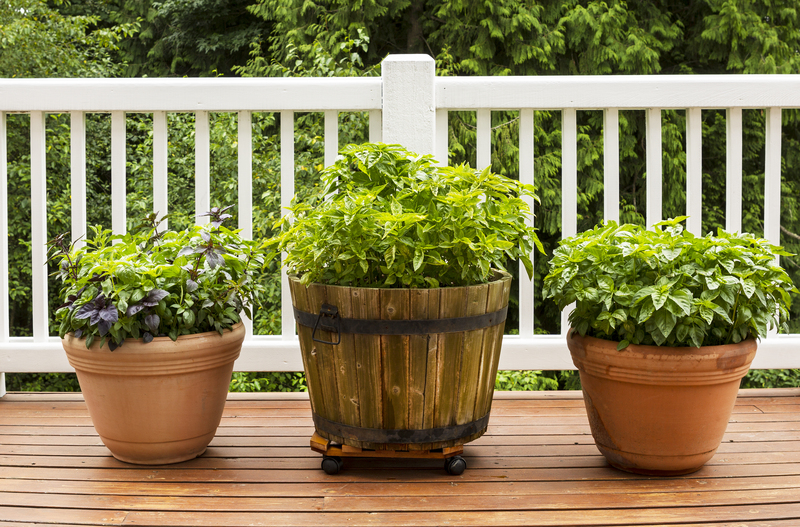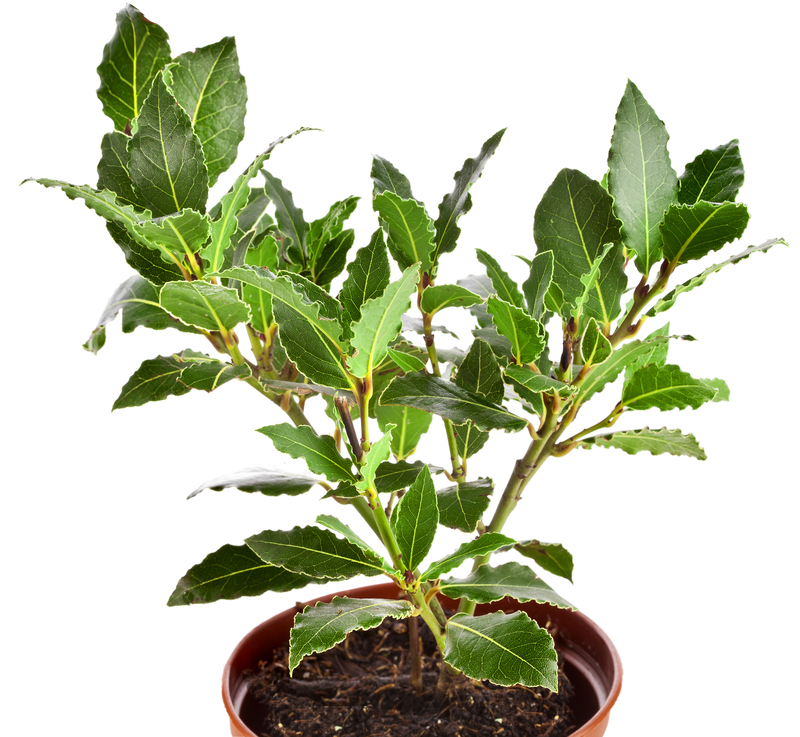Evergreen Hedges and Shrubs as Long-Lasting Privacy Solutions
Are you seeking a natural, sustainable, and year-round method to protect your outdoor space from prying eyes? Evergreen hedges and shrubs are among the most effective and attractive privacy solutions for gardens, patios, and property boundaries. Unlike artificial screens or seasonal plants, these resilient green barriers not only ensure privacy but also boost curb appeal, create habitats for wildlife, and reduce noise pollution. In this comprehensive guide, we'll explore why evergreen hedges and shrubs are the ultimate long-lasting privacy solutions, which varieties to consider, how to care for them, and key tips for thriving privacy hedges.
Why Choose Evergreen Hedges and Shrubs for Privacy?
When it comes to privacy solutions for gardens and yards, hedges and shrubs stand out for multiple reasons. Evergreen varieties retain their leaves throughout the year, giving you consistent protection no matter the season. Let's delve into the primary benefits:
- Year-Round Coverage: Unlike deciduous plants, evergreens provide dense cover even in winter months, maintaining your seclusion without interruption.
- Natural Beauty: Lush green foliage enhances aesthetics, blends with natural surroundings, and creates a tranquil atmosphere.
- Eco-Friendly: They filter dust, absorb carbon dioxide, and support biodiversity by hosting birds and beneficial insects.
- Sound Reduction: Dense foliage helps muffle noise from neighboring properties and busy streets.
- Wind and Dust Break: Evergreens can shield your property from high winds, soil erosion, and airborne particles.
- Property Value: Well-maintained green boundaries can boost real estate appeal and value.
The Difference Between Hedges and Shrubs
While the terms are often used interchangeably, there is a difference between hedges and shrubs:
- Hedges: Linear plantings, often consisting of closely spaced evergreen species, pruned regularly to form a dense barrier.
- Shrubs: Individual or group plantings, usually less formal and may serve as stand-alone privacy screens or accent plantings.

Top Varieties of Evergreen Hedges and Shrubs for Long-Lasting Privacy
Selecting the best species is crucial for effective and sustainable privacy. Here are some of the most reliable evergreen hedges and shrubs used for privacy landscapings:
1. Laurel (Prunus laurocerasus)
- Growth Rate: Fast-growing; up to 2 feet per year.
- Height: Can reach 12-15 feet when untrimmed.
- Features: Dense, glossy broadleaf foliage; tolerant of shade and pruning.
- Ideal for: Quick privacy, formal hedges, tough growing conditions.
2. Boxwood (Buxus sempervirens)
- Growth Rate: Slow to moderate.
- Height: Up to 6-8 feet for some species.
- Features: Small, rounded leaves; highly formal appearance.
- Ideal for: Low to medium-height hedges, classic garden borders, precise shapes.
3. Yew (Taxus baccata)
- Growth Rate: Moderate.
- Height: 4-20 feet, depending on species and pruning.
- Features: Dark-green, needle-like leaves; exceptionally long-lived.
- Ideal for: Formal designs, shaded areas, tolerance of repeated trimming.
4. Holly (Ilex aquifolium)
- Growth Rate: Moderate.
- Height: 10-15 feet or more; can be pruned lower.
- Features: Glossy, spikey leaves with winter berries; bird-friendly.
- Ideal for: Security, wildlife gardens, vibrant winter color.
5. Arborvitae (Thuja spp.)
- Growth Rate: Fast.
- Height: Ranges from 10 to more than 30 feet.
- Features: Soft, scale-like leaves, pyramidal shape, very dense.
- Ideal for: Tall, narrow privacy screens, windbreaks, low-maintenance hedging.
6. Pyracantha (Firethorn)
- Growth Rate: Fast.
- Height: 6-18 feet; trainable to formal or informal shapes.
- Features: Thorny stems, white spring flowers, colorful autumn berries.
- Ideal for: Security barriers, wildlife attraction, year-round color.
7. Photinia 'Red Robin'
- Growth Rate: Moderate to fast.
- Height: Up to 15 feet.
- Features: Striking red new growth, glossy green leaves.
- Ideal for: Decorative privacy hedges, color contrast, easy maintenance.
Key Considerations When Choosing Evergreen Hedges & Shrubs
Before selecting and planting your long-lasting privacy hedge or shrubbery, keep these important considerations in mind:
- Space Availability: Consider the mature height and width; allow room for maintenance.
- Sun & Soil Requirements: Match plant needs (shade or sun, dry or damp soils) to your site conditions.
- Desired Height: Decide if you need a low privacy hedge (3-4 feet) or a tall, imposing screen (10 feet+).
- Formality: Is a formal clipped hedge preferred, or a relaxed, natural look?
- Maintenance Level: Fast growers need more frequent pruning; some evergreens, like boxwood, are slower but easier to manage.
- Pollen & Poisonous Plants: If there are allergies or children/pets, avoid highly allergenic or toxic species.
- Climate Zone: Make sure your chosen plants are hardy in your region.
Planting and Establishing Your Evergreen Privacy Screen
When to Plant
The best time to plant evergreen hedges and shrubs is in the fall or early spring. This timing allows roots to establish before temperature extremes. Avoid planting when the ground is frozen or during drought conditions.
Step-by-Step Planting Guide
- Mark the Area: Use string or stakes to layout your proposed hedge line.
- Soil Preparation: Dig over and enrich the soil with compost or well-rotted manure.
- Spacing: Check the recommended spacing for your chosen species--overcrowding can lead to disease or poor growth. Usually 18-36 inches apart is sufficient.
- Planting: Place plants at the same depth as their nursery containers. For bare-root specimens, spread the roots out in the trench.
- Watering: Water thoroughly post-planting and keep moist until well-established.
- Mulching: Add a mulch layer to conserve moisture and control weeds.
Caring for Evergreen Hedges and Shrubs
The longevity and beauty of your evergreen hedge as a privacy solution depend on regular care. Here are essential maintenance tasks:
- Watering: Regular watering is crucial in the first 2-3 years, especially during dry periods.
- Feeding: Apply a balanced slow-release fertilizer in spring for vigorous growth.
- Pruning: Prune at least once a year, at the end of winter or after flowering. Formal hedges like yew and boxwood may need two trims per season.
- Pest and Disease Control: Check for common issues like aphids, scale insects, root rot, and powdery mildew. Choose disease-resistant cultivars where possible.
- Weed Management: Keep the base of the hedge free from competing weeds or grasses.
Top Tips for Thriving, Long-Lasting Privacy Hedges
- Establish Shape Early: Begin formative pruning right after planting to encourage bushy, dense growth--don't let hedges get leggy or thin.
- Monitor Growth: Fast-growing shrubs like laurel or privet may need regular shearing to retain shape and avoid gaps.
- Water Deeply: Deep, infrequent watering encourages deep root systems, making hedges more drought-resistant.
- Mulch Annually: Organic mulch keeps the soil healthy and reduces maintenance tasks.
- Replace Dead Plants Promptly: Gaps can ruin a privacy hedge's effectiveness; replant as necessary.
The Best Layouts for Evergreen Privacy Hedges and Shrubs
Designing your privacy border depends on your space, personal preference, and hedge function. Consider these classic layouts for evergreen privacy screens:
- Single Row Hedge: One line of shrubs or hedging plants, suitable for tight spaces or pathways.
- Double-Row Planting: Staggered plantings in two rows for increased thickness and a more effective barrier, perfect for windbreaks or maximum privacy.
- Mixed Planting: Combine several species for visual interest, wildlife diversity, and staggered flowering or berry seasons.
- Naturalistic Screening: Use individual large shrubs or clusters to create less formal, organic screens around patios or pool areas.

Frequently Asked Questions about Evergreen Hedges and Shrubs for Privacy
What's the fastest growing evergreen for privacy?
Cherry laurel, leyland cypress, and certain arborvitae species are among the quickest options, achieving up to 2-3 feet of vertical growth per year under good conditions.
How wide should I plant my privacy hedge?
Spacing varies by species, but generally plant 18-36 inches apart for rapid coverage. Always check mature widths to avoid overcrowding.
What's the lowest-maintenance privacy hedge?
Boxwood and yew require less frequent trimming than most fast-growers and maintain shape easily. Many native broadleaf evergreens also offer lower maintenance.
Can privacy shrubs and hedges add value to my home?
Absolutely! Well-maintained evergreen boundaries are sought after for aesthetics, security, and noise buffering, often increasing perceived property value and buyer interest.
How long do evergreen privacy hedges last?
With proper care, many species such as yew, laurel, and holly can thrive for decades, sometimes even centuries, making them a true long-term privacy solution.
Transform Your Garden with Evergreen Privacy Solutions
Investing in evergreen hedges and shrubs for privacy is a choice that pays dividends for years to come. Not only do these plants create natural, year-round privacy and beauty, but they also support the environment and allow you to shape your outdoor space to suit your needs and lifestyle.
Whether you're seeking a formal clipped hedge, a wildlife-friendly buffer, or a colorful mixed border, there is an evergreen solution that fits your requirements.
Start by selecting the right species for your space and climate, invest in good soil preparation, and commit to simple, regular care routines. With these steps, your garden will benefit from attractive, robust, and effective green privacy for generations.
Ready to create your own living privacy wall? Evergreen hedges and shrubs are the answer for sustainable, beautiful, and lasting privacy solutions.